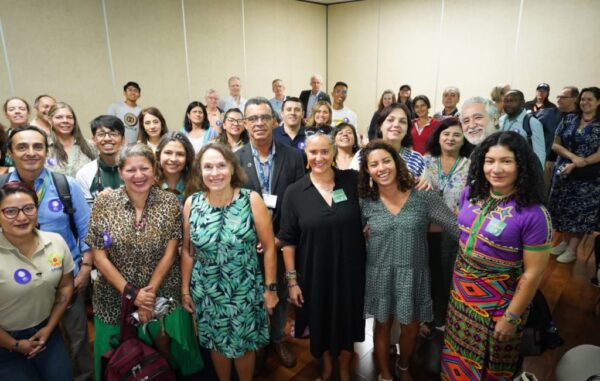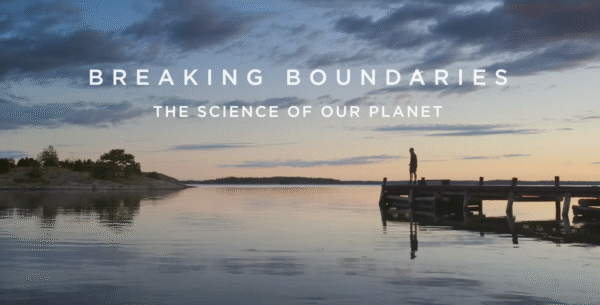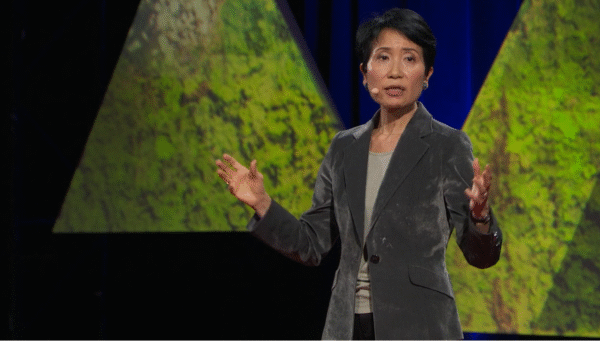

Our Story
2025
Building on the success of the five original members — the Earth Commission, Earth HQ, Systems Change Lab, Science Based Target Network, and the Accountability Accelerator — the Alliance evolves its membership to bring together a diverse group of actors to translate science into systemic change in governance, finance, the economy, and culture. Through deeper cross-sector collaboration, the Alliance empowers decision-makers to catalyze systemic shifts that bring economies and societies within the planet’s Safe and Just limits.
The Alliance has become a platform for new partnerships and initiatives in which the activities of individual members are progressed through the combined impact of the whole Alliance, as we work toward a shared mission: to safeguard and restore Earth’s life-support systems, equitably, now.
2024

- All Alliance members converged with civil society, businesses and wider communities at COP16 in Cali, Colombia, to accelerate systems change and safeguard the global commons.
- The Science Based Targets Network announced the first companies publicly adopting science-based targets for nature.
- Accountability Accelerator opened its validation services for companies working to set science-based targets.
- Systems Change Lab released new systems data across more than 70 critical shifts.
- Earth HQ expanded its communications initiatives to launch Earth Public Information Collaborative (EPIC) and collaborated on the Planetary Health Check, along with the Earth Commission.
- The Earth Commission’s second flagship study, published in The Lancet Planetary Health, is the first time scientists have quantified safety (a stable planet) and justice (people being protected from harm and ensured a life free from poverty) in the same units – demonstrating that justice is a prerequisite for the safety of both the planet and its people.
2023

- The Earth Commission’s first study quantifying Safe and Just Earth System Boundaries, published in Nature, shows that most of the boundaries, on a global and local scale, are already transgressed.
- The Science Based Targets Network launched the world’s first science-based targets for nature, a significant milestone towards helping companies take integrated action across freshwater, land, ocean, biodiversity, and climate.
- Global Commons Alliance launched a new visual identity at COP28, where we hosted the Global Commons Pavilion.
2022
- The Accountability Accelerator was launched to accelerate appropriate disclosure, benchmarking and action around the world, including by supporting local and grass roots groups in the Global South.
- The Alliance collaborated with some of the world’s biggest civil society group to support the Nature Zone, a new space to bring nature into the heart of climate action at COP27.
2021

- Earth HQ was launched at COP26 in Glasgow.
- The Earth Commission published its framework for a safe and just corridor for a future in which people can thrive without destroying the planet.
- Systems Change Lab released the first annual State of Climate Action report. The Alliance team contributed to a new Netflix documentary, Breaking Boundaries.
2020
- Over 50 organizations are now part of the Alliance.
- The first guidance for businesses to prepare for targets for all global commons was published.
- A major media partnership with Now This to create Now This Earth was launched.
- Systems Change Lab was launched to monitor, learn from and advance transformational change.
2019
- In June 2019, the Global Commons Alliance was launched at the EcoProsperity event in Singapore. Read about the Alliance’s origin story in Founder Patrick Frick’s own words.
- The Earth Commission was launched to synthesize the latest science to define the boundaries for a safe and just planet.
- The Science Based Targets Network, which provides a platform for cities and businesses to adopt targets for all global commons, was launched. The network identified the initial global commons upon which to focus: biodiversity, climate, land, ocean and water.
2017

Naoki Ishii, at the time, the leader of the Global Environment Facility, presented the global commons on the TED stage.
2016
The report, The Global Commons in the Anthropocene: World Development on a Stable and Resilient Planet, was published in November at an event convened in Washington DC by the Global Environment Facility. The report concluded that a stable, resilient planet is a critical global commons, but in the Anthropocene this stability and resilience is now at risk. All interconnected systems that support this stability and resilience should be considered global commons and protected. The event brought together leaders from business, science, advocacy, the media and policy. It focused minds on the urgent need to safeguard the global commons and the need to adopt new thinking and approaches to scale action.
2015
The Global Environment Facility commissioned two scientific organizations, the International Institute for Applied Systems Analysis and the Stockholm Resilience Centre, to produce a report on the global commons in the Anthropocene. In the same year scientists announced a fourth planetary boundary relating to deforestation had been transgressed.
2009
In September, one of the world’s leading academic journals, Nature, published a seminal article entitled “A Safe Operating Space for Humanity”, which introduced the concept of Planetary Boundaries. The article, written by the co-founders of the Stockholm Resilience Centre, Johan Rockström and Carl Folke, along with an international team of scientists, concluded three boundaries had been crossed relating to climate, biodiversity and the biogeochemical cycles of nitrogen and phosphorus.
In October, the Nobel Committee awarded Elinor Ostrom the Nobel Prize for economics for her work in identifying principles for effective management of common resources, research of direct importance for managing the global commons. Ostrom, who died in 2012, was a US political scientist and board member of the Stockholm Resilience Centre.